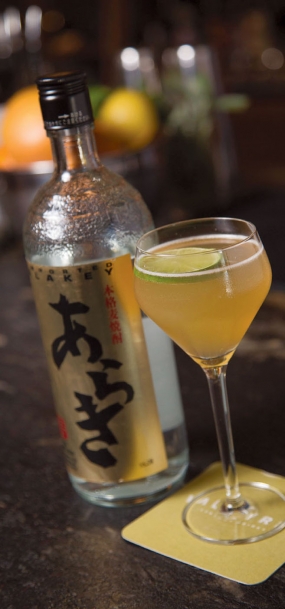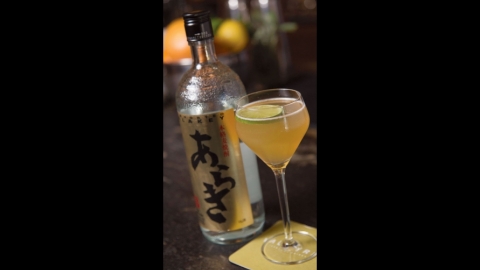The Shot Poured Round the World
Soju is the best-selling beverage you’ve never heard of
Let’s talk about the undisputed top-selling spirit in the world. Do you think you have a decent guess at what it is? If pressed, I would say it’s almost definitely vodka, or maybe bourbon as a half-hearted dark horse bet. That seems reasonable, right?
It’s also very incorrect. Unless you said “soju,” I’m afraid you—and I—guessed wrong. But don’t feel bad! Let’s chill our glasses, share a shot and have a chat about this strange and super-popular drink.
So, what is this stuff, you ask, wondering how a seasoned drinker such as yourself could’ve gotten this far without hearing of it. Originating from Korea in the 1300s, soju is a clear distillate of primarily rice, generally 50 proof, though it ranges. It sips smoothly and cleanly with a flavorlessness similar to vodka while exhibiting considerably less of a bite. Billions of bottles are consumed yearly in South Korea alone, with the Jinro brand being the single-most dominant brand of liquor worldwide in terms of sales, having in 2011 sold flatly double the units of its closest competitor, Smirnoff Vodka. Which is all very impressive, considering that less than 5% of Jinro’s sales come from the United States market. So don’t feel bad if the name doesn’t ring a bell.
Though it’s tempting to mix sakes and sojus, both for their common rice bases and alliterative names, they are not two sides of the same token. It would be like grouping bourbon with beer. Where sake is a brewed wine, with varied colors and more fruity, flowery flavors, soju is a distilled clear liquor, stronger in alcohol content, with much subtler taste.
Since soju is a liquor all its own, it defies easy categorization in a western market. Predominately 50 proof, somewhere in the mid-20s with regards to alcohol by volume, it is more potent than beers, wines and sakes but well beneath the strength and bite of vodkas and gins.
But what does it taste like? Is it even worth it? Maybe American tastes just wouldn’t be into it. Not so, says I. Served ice cold in a chilled glass, a gulp of it goes down like a good-quality, drinkable vodka, with little burn. It’s unsettling at first, if you’re given to associating that taste with a much stronger buzz, but after a few shots, a certain rhythm can set in. In its basic form, it’s nearly flavorless—a great boon for the dark-liquor-averse in search of a reliable, out-of-the-ordinary sipping drink.
It also pairs fantastically with a broad range of foods. Primarily good with the sweet and spicy flavors of Asian cuisine like kimchi, and also meats like pork and fish, served steamed or as sausage, as sashimi or in soup.
Naturally, a flavorless sort of baby vodka isn’t all there is to the spirit, which is great, because it can almost feel like a novelty until you start letting your imagination go. A fertile ground for cocktails, soju makes a smooth addition to a number of clear-liquor recipes, like the Greyhound or the Moscow Mule, blending well with fruit flavors without the bite of vodka or gin. I daresay it’s sessionable, if you’re given to that kind of thing.
And I would be remiss not to mention the soju bomb, a simple depth charge beer-soju combination that tastes so much better than it sounds like it would, particularly with a decent Asian beer like the Chinese-brewed Yanjing. What sounds like it might be an experiment in replicating the taste of paint thinner is remarkably good in practice; something about the smoothness of the soju extends throughout the entire beverage, making for a quick, icy quaff . And like all bomb shots, it’s fun.
I’ve found that a feature common to the Midwestern palate, when it comes to booze, is a tentative fear of the unknown. This probably has to do with exposure—it always takes awhile to get around the world to Tulsa. But as I’ve been known to say, when it comes to alcohol, fear of the unknown is the enemy, and I will have none of it. So where in Tulsa can you get this stuff ? Park Hills, located southeast at the intersection between Highway 44 and Lewis Avenue, has an ample selection on hand, from the aforementioned Jinro to more obscure and flavorful fare like the Vietnamese brand Kai, distilled from rice, one variety of which also contains notes of lemongrass and ginger. (Check the cordial aisle.)
As for price points, it depends on where in the city you are, but a fair price for Jinro is around $13 for a 750ml bottle. Kai is $27 and Taiku is upwards of $29. If you’re situated near Owasso, there is also a brand called Alakey, made in California, which can be found for $23 at Owasso Liquor and Wine, at 86th Street North and the Owasso Expressway.
Regardless, most liquor stores will order a little for you if you ask. And why not? Next time you’re in the mood for some Korean food, take a pass on the beer accompaniment. Try some soju, have some adventure and get down with the most popular booze you’ve never heard of.






